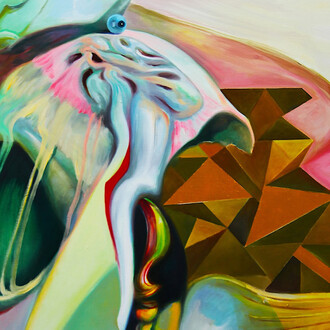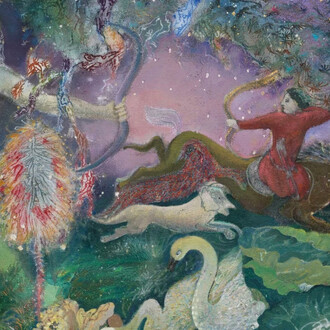Objects are what matter. Only they carry the evidence that throughout the centuries something really happened among human beings.
(Claude Levì-Strauss)
New Discretions is proud to present I want your skull, a solo exhibition of new wood inlay works by Michael Bühler-Rose. This is his third project with the gallery.
The gathering and presentation of objects has long been a source for judgment, pride, territorial claim and anxiety. Whether it is at the personal level of New York times journalists judging the books on the shelves of lockdown zoom conversations, Marie Kondo asking us to find sparks of joy in our possessions, or the cultural level of demands for repatriation of stolen goods held in national and private collections worldwide, what we display and how we display is who we are. Bühler-Rose has long been fascinated by how one explores and reveals an inner life through collections; every t-shirt, book and object tracing one’s character.
Trained as a photographer, Bühler-Rose’s recent work begins with composed and collected photographic images to build wood inlay trompe l’oeil compositions of both real and aspirational collections. The centerpiece of the exhibition is Bühler-Rose studiolo summer ‘24 (FDR and Grand St.)—a modest cabinet shelf, overflowing with cultural markers collected along the artist’s path. The assembled materials provide physical evidence of experiences and influences. On Kawara, Johnny Marr, Lawrence Weiner, Chris Burden, the Bhagavad-gita and other Sanskrit texts, vintage guitar, and Bühler-Rose’s own previous works mingle perfunctorily with houseplants, Warhol prints and effects pedals. The resultant accumulation of influences and study become an interior life captured, frozen and flattened as bare wood veneers, unadorned by paint or dye.
The practice of intarsia, or inlaid wood mosaic, likely derived from South Asian ivory and wood inlay traditions, found its richest expression in Western Art during the Italian Renaissance. A prime example of which is the Studiolo from the Ducal Palace in Gubbio (1478-82), in the collection of the Metropolitan Museum of Art. Built as a space for personal meditation and study through the collection of depicted objects, in this case for Duke Federico, the room becomes a portrait of the collector as his objects. Continuing in the Studiolo methodology, Bühler-Rose premieres here new wall-based inlays depicting the verso of famous works by Salvador Dali and Robert Rauschenberg.
Rauschenberg’s Erased de kooning drawing (1953) is, of course, an early example of trace as a conceptual practice. Through both the destruction of de Kooning’s form and a title that becomes our only reference to that earlier, more complete aesthetic state, erasure as existence and life becomes fixed. At this point, Erased de kooning drawing lives so much in mythology that as with the alluded to, but now gone, de Kooning, we no longer need to see Rauschenberg’s work to feel its presence. In Bühler-Rose’s version, the back of the frame and its cataloged journey through a “who’s who” of museums and exhibitions physically records historical provenance to a degree the front of the work never will. Bühler-Rose’s continued erasure of the image of the original drawing offers instead a view usually known only to the owner of the work. This strategy is repeated again with the verso of Madone corpusculaire (1952), Dali’s nuclear age Virgin Mary.
A final work, Puzzle for F.G.T. and R.L. (Paris, Last time, 1989), pays tribute to Felix Gonzales-Torres’s oeuvre, particularly his signature combination of gestures of generosity and loss with cool conceptualism, infusing everyday objects and images of impermanence with a range of interior emotion. Here, even smaller pieces of wood are puzzled together to picture a puzzle, in this case a place of meditative impermanence rendered permanently pieced together.
Michael Bühler-Rose (American, b. 1980) lives and works in New York, NY and Mysore, India. He received his BFA from School of the Museum of Fine Arts Boston at Tufts University, a Fulbright (India) and his MFA from University of Florida, Gainesville. Solo exhibitions include Andrew Rafacz (Chicago); Carroll and Sons (Boston, MA); Scaramouche (New York, NY); Light Work (Syracuse, NY); and the Everson Museum (Syracuse, NY). He was part of a two-person exhibition with A.A. Bronson at Nature Morte (Berlin, Germany) in 2013. Recently he has exhibited with Asya Geisberg Gallery (New York); 601Artspace (New York); Wasserman Projects (Detroit); Sean Horton (New York); Jimei x Arles (Jimei, China); amongst others. His work is included in numerous public and private collections.













